Gardening with Milkweeds: The Basics...
Spring is finally convincingly upon us, although the cold weather we've been having would fool you! Here at Toadshade we've been shipping and packing and admiring the wildflowers, but we wanted to take some time to answer a few questions we've received regarding milkweeds! Many of you have been planting milkweeds to support monarch populations, but with so much public awareness about monarchs and milkweeds, sometimes it becomes difficult to sift through all the information... so we thought we would try to answer some of your questions!
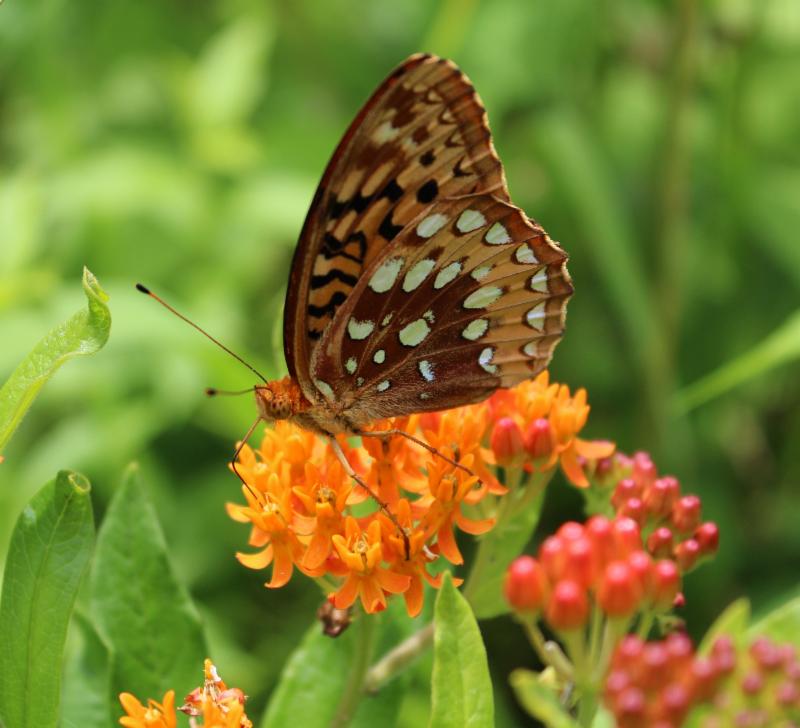
Great Spangled Fritillary (Speyeria cybele) nectaring on Butterfly Milkweed (Asclepias tuberosa)
Why Aren't My Milkweeds Up Yet?
Our native Milkweeds, although they are perennial, are very cold-shy species: and with the weather we've been having, they're smart to be so! Butterfly milkweeds in particular wait some time before showing their faces above the soil, but all milkweeds take their time sprouting in the spring: with apologies to Gandalf, they come up exactly when they mean to. Be patient! Your milkweeds are likely just biding their time. In a typical spring, milkweeds don't come up until the soil has warmed up, and that may not happen until several weeks after the frost-free date: sometimes as late as early June in our area. This is normal!
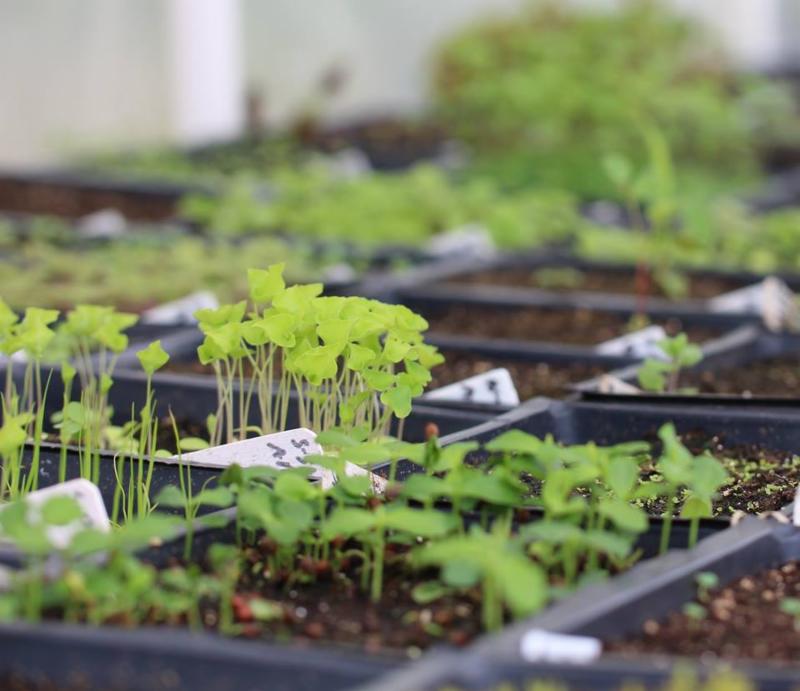
Seedlings sprouting in the Toadshade greenhouse
What's the Best Milkweed Species to Plant for the Monarchs?
A monarch butterfly's favorite milkweed is a healthy one, which means a milkweed growing in conditions suited best for it. There are many species of milkweed native to the United States, and monarchs feed happily on all of them, so choose one native to your area, and suited to the conditions of your garden! The monarchs and the milkweeds alike will thank you for it. New Jersey alone has 12 species of milkweed native to the state: if you would like to see which milkweeds are native to your area, you can visit the Biota of North America Program's very intuitive range maps to take a look. Monarchs feed on all species of milkweed, so as long as you choose a milkweed that's native to your area, and plant it in conditions suited well to it, the monarchs and the milkweed will both be happy!
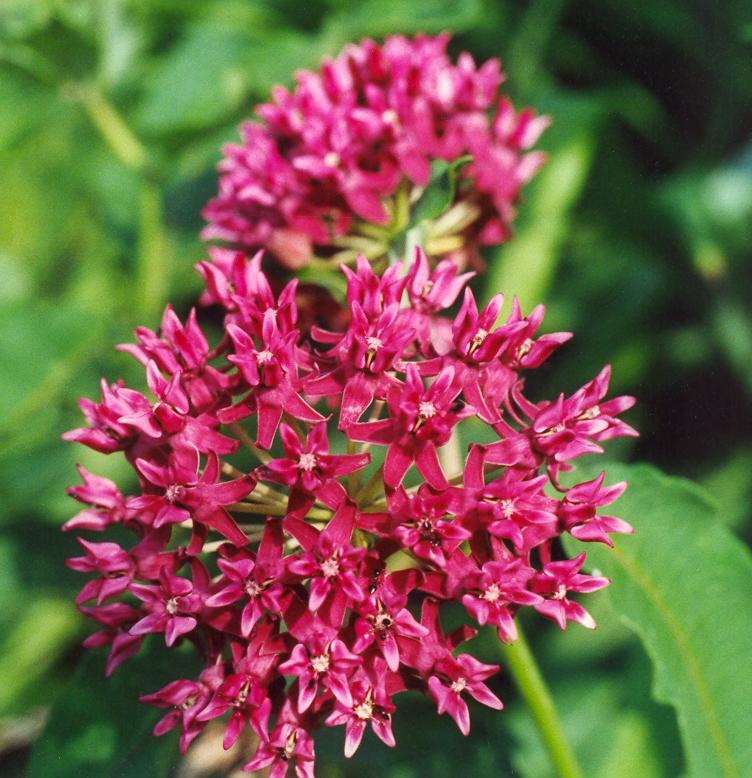
Rare Purple Milkweed (Asclepias purpurascens) in full bloom
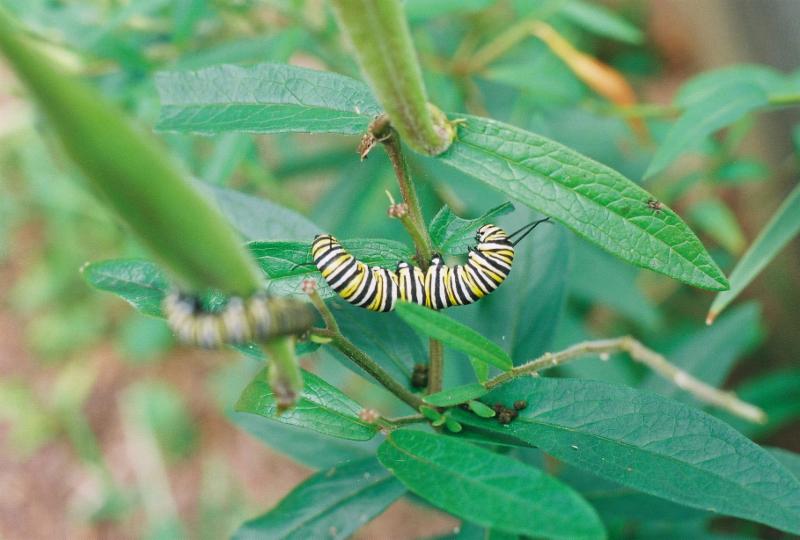
Monarch caterpillars (Danaus plexippus) feeding on Butterfly Milkweed (Asclepias tuberosa) leaves
What's the Story with Tropical Milkweeds?
Tropical milkweeds are great milkweeds if you live in the tropics, but they have some downsides for gardeners in temperate regions who are looking to help monarchs. The yearly decline of our native perennial milkweeds in the fall is one of the many clues monarch caterpillars rely on as a signal to produce a migratory form and start flying south.
By contrast tropical milkweeds, as annuals, won't decline until the first hard frost, which can trick monarchs into staying longer than they should, resulting in frozen butterflies. Monarchs will also breed continuously on the same tropical milkweed plant throughout a season, which can drastically increase disease rates in the insects. If you're looking to help out monarchs, it's best to use milkweeds native to the areas where the monarchs are using them (namely, your yard).
When's the Best Time to Plant Milkweeds, and Where Should I Put Them?
It's usually a good idea to plant milkweeds in spring or on the early side of summer so that their roots have all summer to get established before facing winter conditions, but the cool days of early fall are also an option. Milkweed seeds, however, are best sown in the fall or early spring so that their relatively short cold stratification period can be satisfied outdoors. In terms of planting location, there are a number of options, because different species of milkweeds have different preferred conditions: there are milkweed species which prefer sandy soil, others which grow in wet soil, and even some relatively rare milkweeds which prefer the dappled shade of woodland conditions. Simply look at the options native to your region and choose a milkweed suited to the conditions of your garden! One unifying detail between milkweeds, however, is that they all have large root systems, and do best when they are planted in the ground while they are still fairly young, so that their root systems can get established in your garden from the start. If you intend to put your milkweeds in a planter, plan for a very large planter, perhaps a whisky-barrel style, or at least comparable in size.
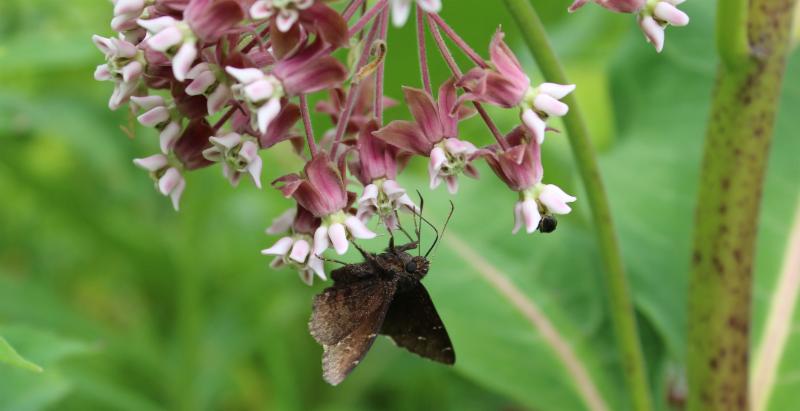
Wild Indigo Duskywing (Erynnis baptisiae) nectaring on Common Milkweed (Asclepias syriaca) flowers
Will Other "Critters" Show up on my Milkweeds?
Yes! And that's a good thing! Many species of insect and bird make use of milkweeds; for example Baltimore Orioles favor milkweed fiber from old stems as nesting material, and hummingbirds will happily feed on any milkweed aphids they find, or take them back to their nest to feed their young.
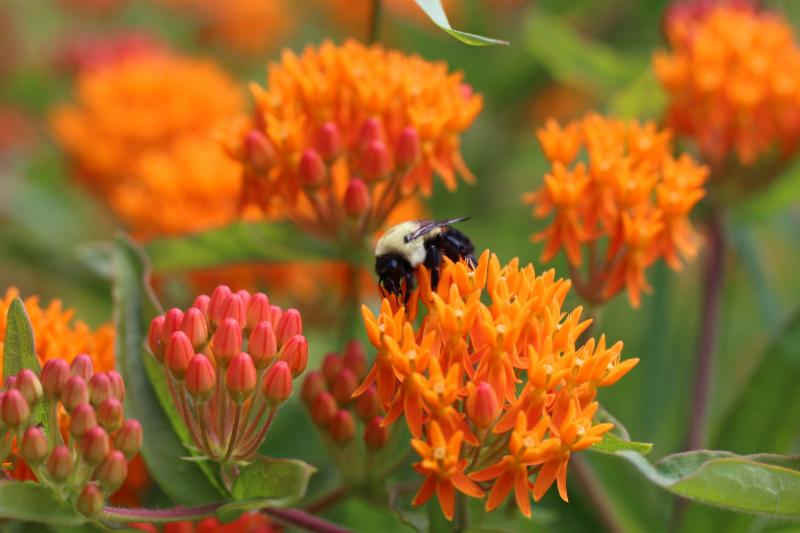
A bumble bee (Bombus sp.) nectaring on Butterfly Milkweed (Asclepias tuberosa
Pollinators such as native bees, honey bees, huge varieties of native butterfly species, and sphynx moths make the most of milkweed's beautiful flowers, which are an exceptionally good nectar source for pollinators of all kinds. Deer will generally leave your milkweed plants alone, because milkweeds can only be eaten by specialists such as the monarchs, but monarchs are not the only milkweed specialists in existence-- nor should they be! Do not mistake the monarch butterfly's relationship with milkweed plants for a monopoly over milkweed's use. By planting milkweed you benefit monarchs... and lots of other fascinating species.

Randi V.W. Eckel, PhD
